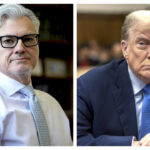Commentary
All candidates for the U.S. presidency are in agreement that U.S. Steel should remain under American ownership and not be sold to the Japanese company Nippon Steel for $14.1 billion. Despite Nippon Steel’s assurances to preserve American jobs at union wages, upgrade facilities, and save the company, there is strong opposition to the deal. If the sale doesn’t go through, U.S. Steel may have to leave Pittsburgh, PA, its home since 1901, and shut down factories.
On the surface, rejecting the deal may seem illogical. The U.S. has historically promoted the idea of “friend-shoring” to keep factories in the country rather than moving them overseas. Blocking this deal would be an unprecedented intervention by the government and could deter future foreign investment in the U.S. However, there is significant resistance due to cultural, nationalist, and historical reasons.
Moreover, U.S. Steel symbolizes American industrial prowess and its foreign acquisition could mark the end of American-owned manufacturing. The controversy is further complicated by the upcoming presidential election, with neither Trump nor Kamala wanting to be seen as supporting foreign ownership over American interests.
There are deeper issues at play as well. The decline of U.S. industry over the past 40 years due to foreign competition has led to the loss of various industries, leaving behind empty facilities and impacting communities. American manufacturing, once geared towards mass production, has now shifted towards niche markets catering to the elite.
Trump has made the issue of American manufacturing loss a central theme in his speeches, advocating for tariffs as a solution, diverging from the traditional Republican stance on free trade. The shift in global manufacturing dynamics and the impact of free-floating exchange rates have also raised questions about the true nature of the global marketplace.
The dismantling of the price-specie flow mechanism in 1971 has fundamentally altered trade dynamics, with the U.S. accumulating debt assets used by foreign central banks to bolster their manufacturing sectors. This has led to a skewed trade balance and challenges the traditional theories of international trade.
The trade deficit data reflects the reality of America’s loss of capital, infrastructure, supply chains, and manufacturing skills that once made it a leader in consumer goods production. Japan and China have been the biggest beneficiaries of this trend in the 21st century, with Japan’s proposed purchase of U.S. Steel being facilitated by vast subsidies from U.S. debt held by its central bank.
Despite being the main reserve currency for the world, the U.S. has faced challenges due to the creation of new units of currency that threaten domestic production. This, combined with high taxes and regulatory controls, has made it difficult for businesses to thrive domestically. The mismanagement of the domestic economy and the monetary system has led to chronic trade deficits and a decline in American manufacturing competitiveness.
The backlash against free trade has led to a reconsideration of global economic liberalism, with foreign ownership of historic U.S. plants becoming a contentious issue. Economists argue that blocking foreign investment is not the solution, but larger reforms including deregulation, budget balancing, and monetary system stabilization could help restore American industry without resorting to protectionist measures.
The current dilemma surrounding U.S. Steel is a reflection of decades of policy mismanagement, and the solution lies in comprehensive domestic reform rather than short-term fixes. By addressing these underlying issues, American industry can be revitalized and regain global competitiveness. Please rewrite this sentence.
Source link





